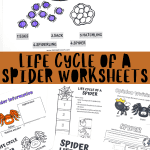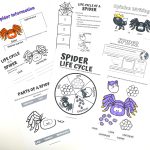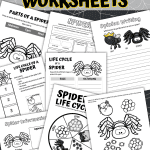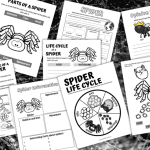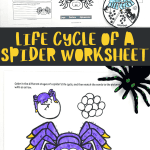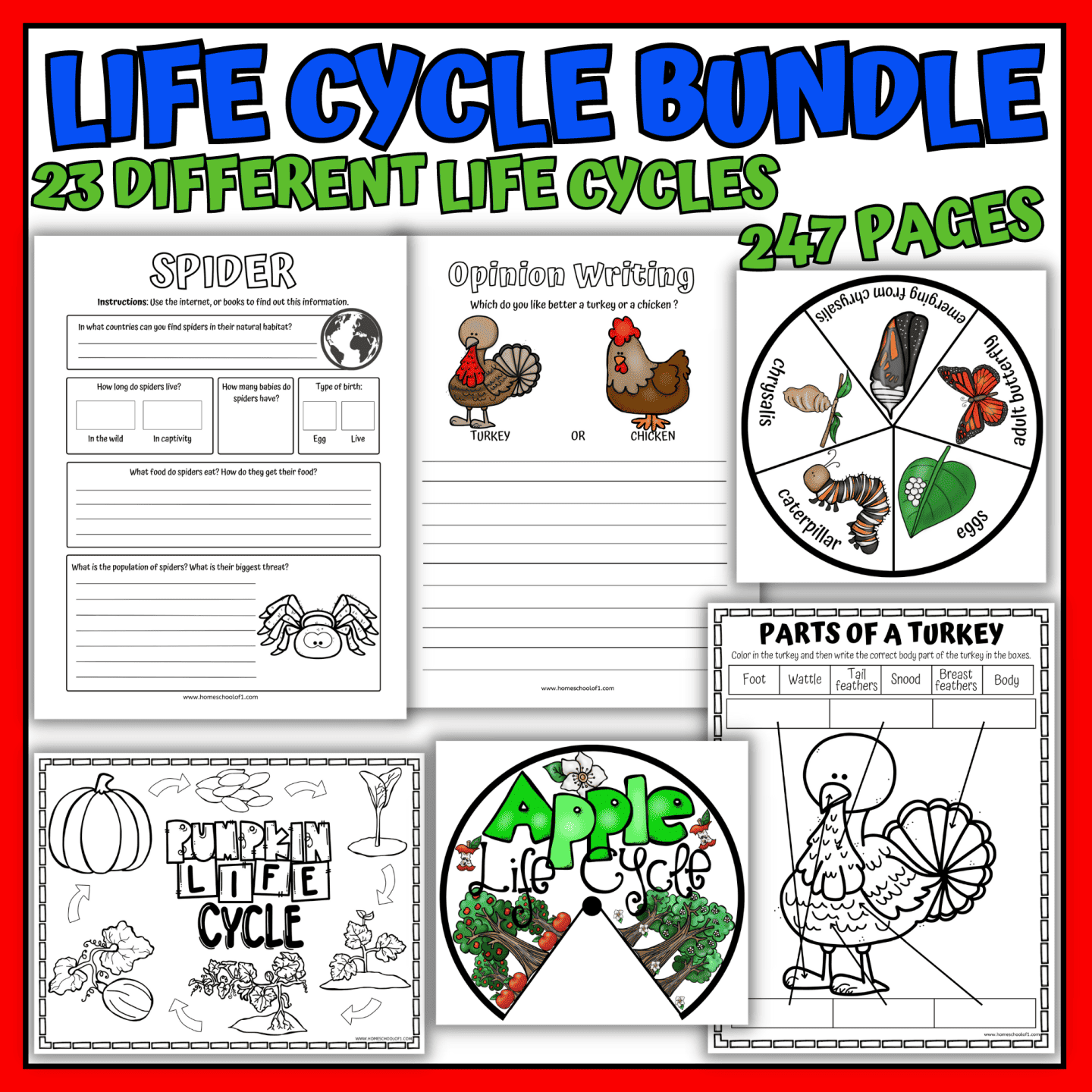Free Spider Life Cycle Worksheet for Kids
Exploring the spider life cycle worksheet offers a fascinating journey into the world of these eight-legged creatures, revealing the stages they go through from egg to adulthood.
By using the spider life cycle worksheet, children can discover how spiders hatch from eggs, grow through several molts as they mature, and eventually become adults capable of reproduction.
The spider life cycle worksheet is an excellent resource for parents and educators looking to introduce the concept of life cycles in a way that’s both educational and captivating.
It simplifies complex biological concepts into understandable segments, making it easier for children to grasp. Additionally, these free life cycle worksheets can be a stepping stone for discussions about the importance of spiders in ecosystems, highlighting their roles as both predators and prey.
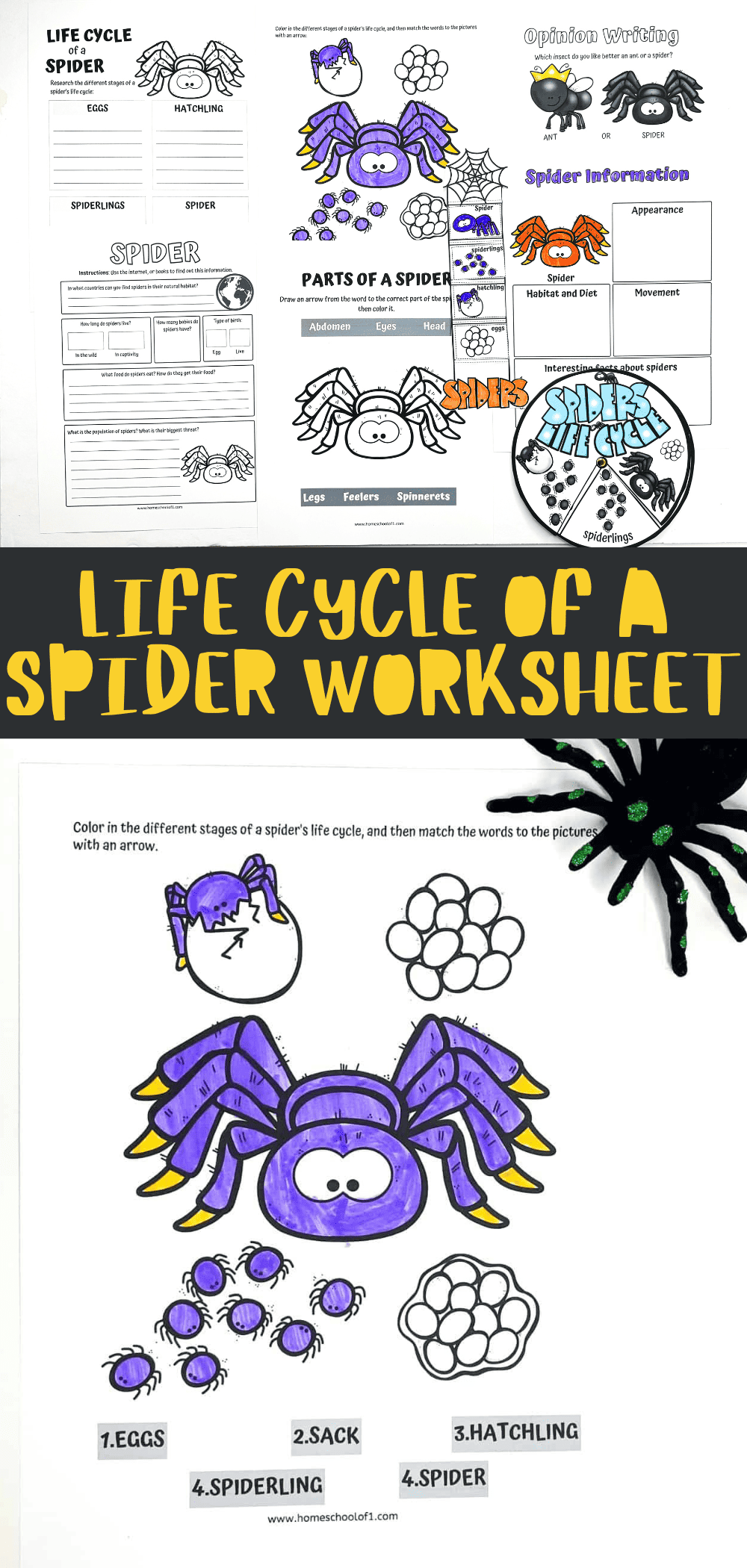
**This post may contain affiliate links. As an Amazon Associate and a participant in other affiliate programs, I earn a commission on qualifying purchases.**
Life cycle of a spider worksheet
Dive into the captivating world of arachnids with our enriching life cycle of a spider worksheet, a resource bound to capture the imagination of children and adults alike.
This engaging, free printable offers a detailed exploration of the stages in a spider’s life, from egg to adulthood, making it a perfect educational tool for classrooms, homeschool settings, or just a fun activity at home.
What makes this worksheet especially appealing is its accessibility; you likely have all the required supplies on hand:
Supplies needed:
- cardstock (printer paper will also work)
- coloring pens
- paper cutter or scissors
- glue
- brass fasteners
Research spider information
The first worksheet is a planning sheet where the children have to find out about spiders. What their appearance is, their habitat and diet, movement, and any interesting facts.
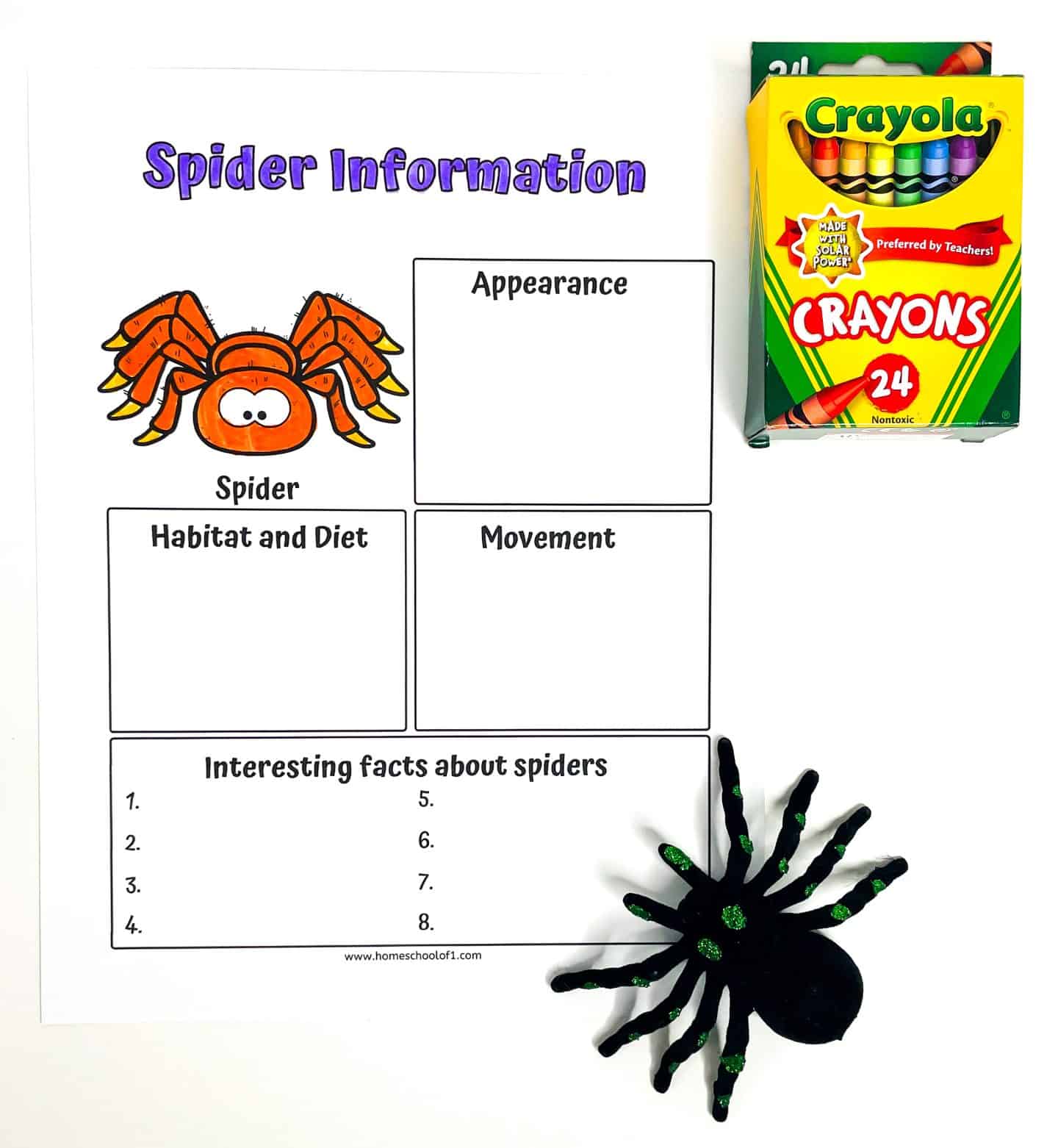
Interesting facts about spiders
Here are eight fun and fascinating facts about spiders that kids will enjoy:
- Spiders are famous for their silk spinning abilities. They use silk to build webs for catching insects, make egg sacs, and even create safety lines to help them move around.
- Most spiders have eight legs, but did you know they also have two body parts? The front part is called the cephalothorax, and the back part is the abdomen.
- Different spider species create all sorts of cool webs. Some make spiral webs like a pinwheel, while others build messy-looking cobwebs. Each web design helps them catch prey in a unique way.
- Spiders don’t have great vision like humans do, but they have super senses! Some can feel vibrations in their webs to know when an insect is caught, and others can taste with their feet to check if something is edible.
- Spiders are amazing builders. Some can rebuild their entire webs in just one night!
- Many spiders hang upside down in their webs, just like acrobats. When they catch prey, they use their sharp fangs to inject venom and turn the prey’s insides into a liquid snack.
- Spiders come in all sorts of colors and sizes. Some are bright and colorful, while others blend in perfectly with their surroundings.
- Some spider species are so light that they can catch the wind and fly through the air! They create a thread of silk, and when the wind catches it, they’re lifted up and carried to new places.
These are just ideas, let the children come up with their own answers.
Opinion writing ant vs spider
I love this opinion writing worksheet. Which do you like better an ant or a spider?
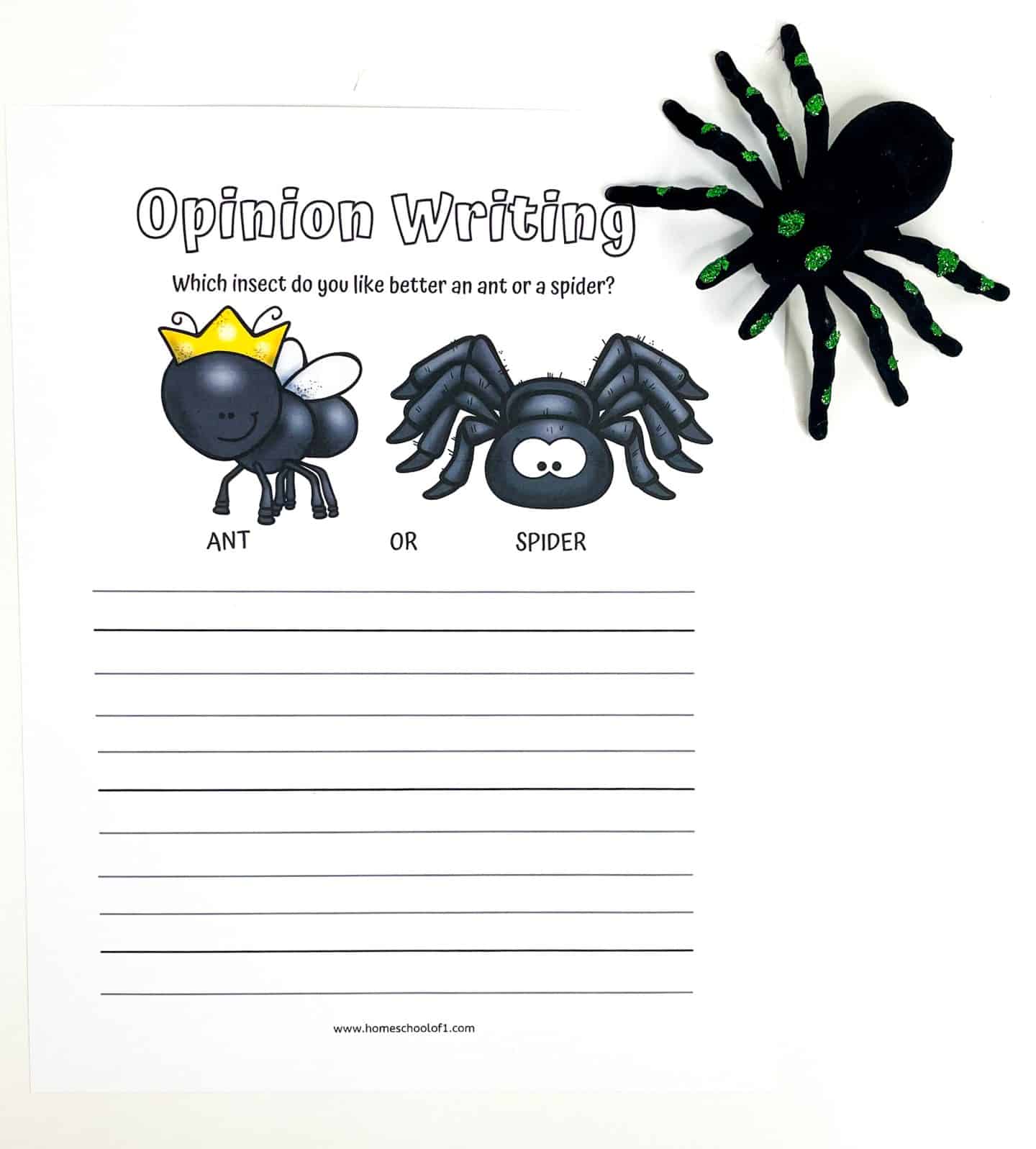
Spider fact sheet
The children will need access to the internet to complete the information about spiders. They need to find:
- In what countries can you find spiders in their natural habitat?
- How long do spiders live? In the wild, and in captivity
- How many babies do they typically have?
- The type of birth, is it egg or live?
- What food do spiders eat? How do they get their food?
- What is the population of spiders? What is their biggest threat?
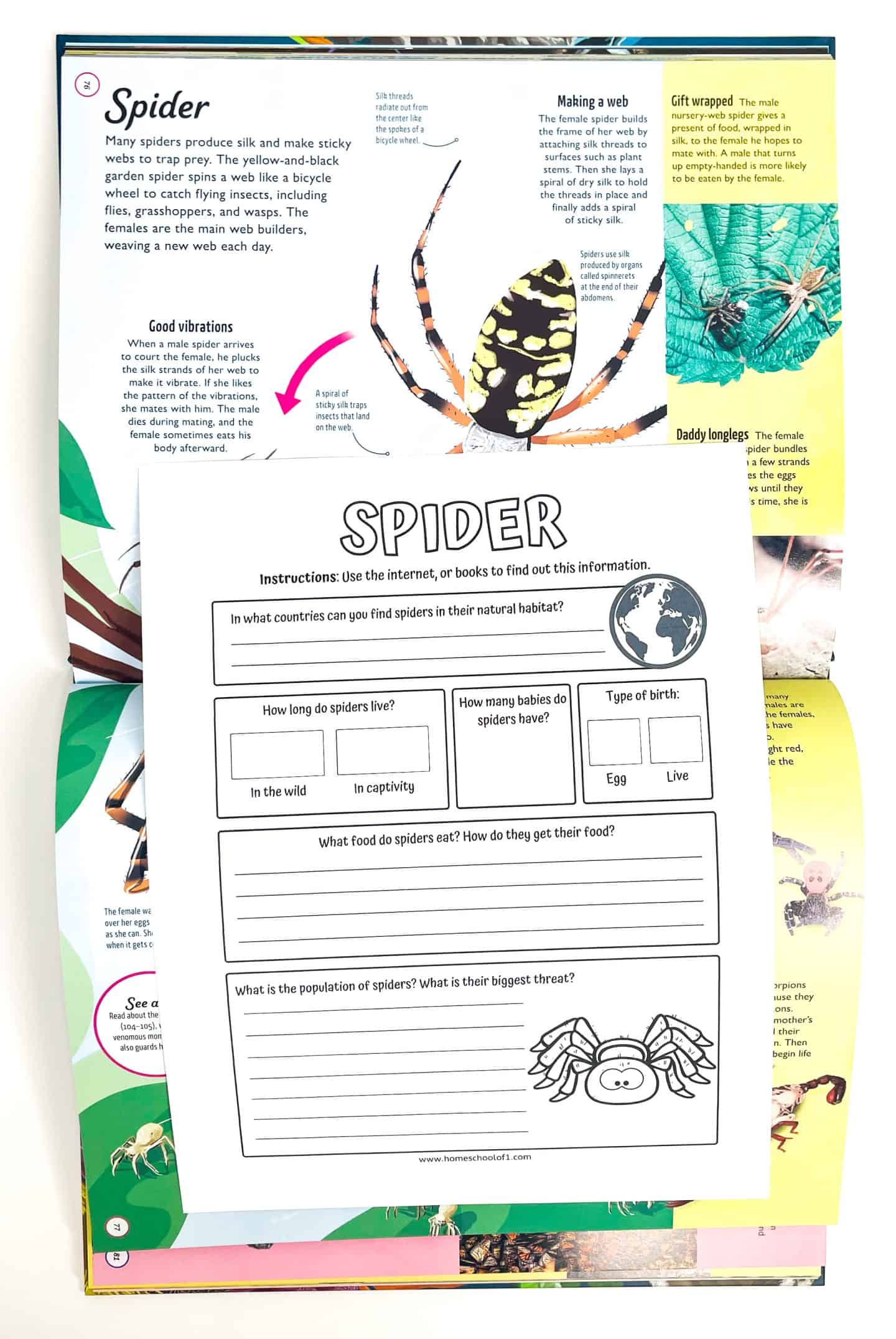
Research the 4 main stages of the spider’s life
Research the different stages of a spider’s life cycle from the eggs, to the hatchling, to spiderlings, to an adult spider.
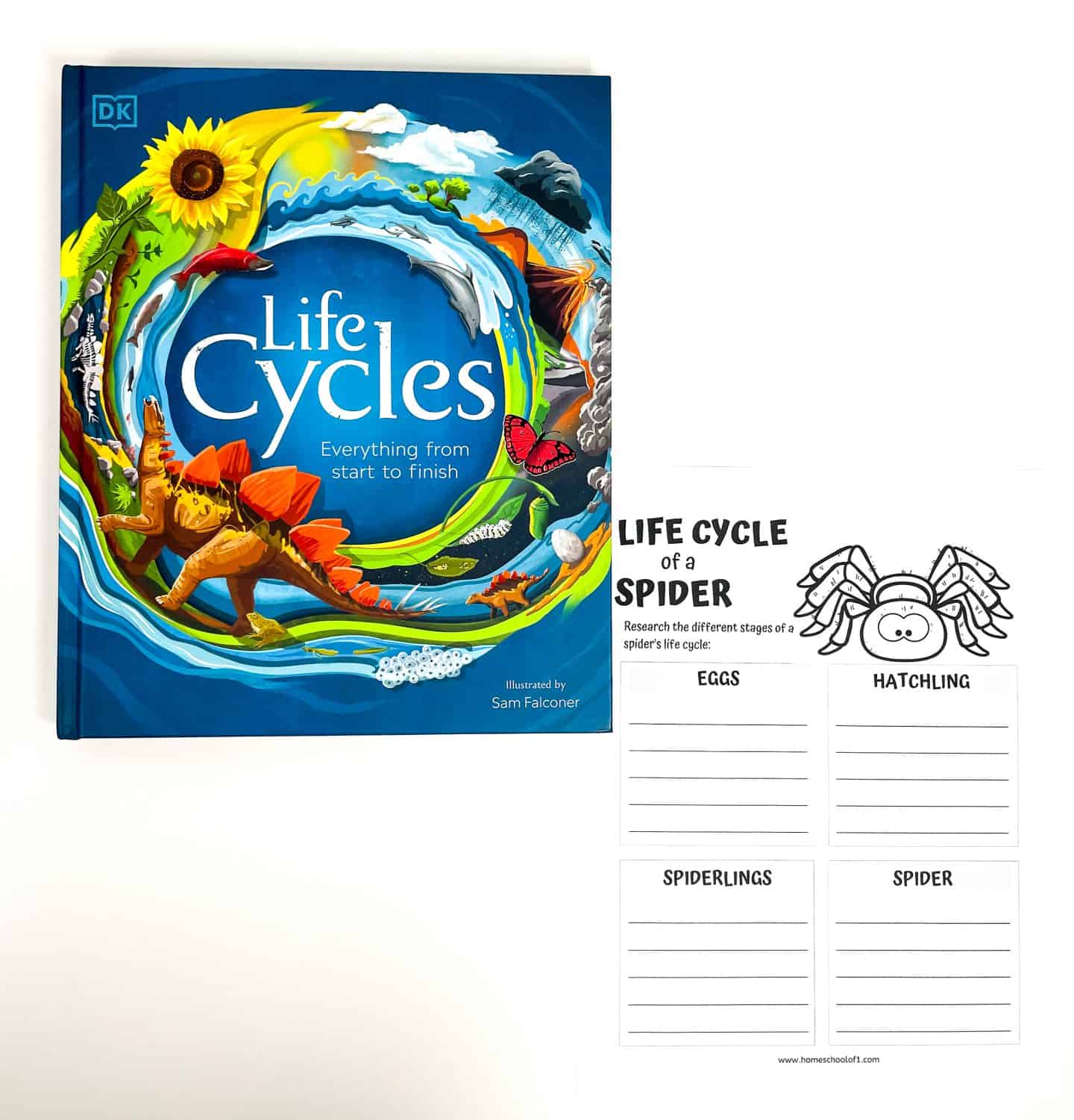
We also use the book Life Cycles for our studies and they have the spider included. We also love to use this life cycle kit.
Color and label the parts of a spider
Label the parts of a spider worksheet, abdomen, eyes, head, legs, feelers, and spinnerets. Then color in the spider.
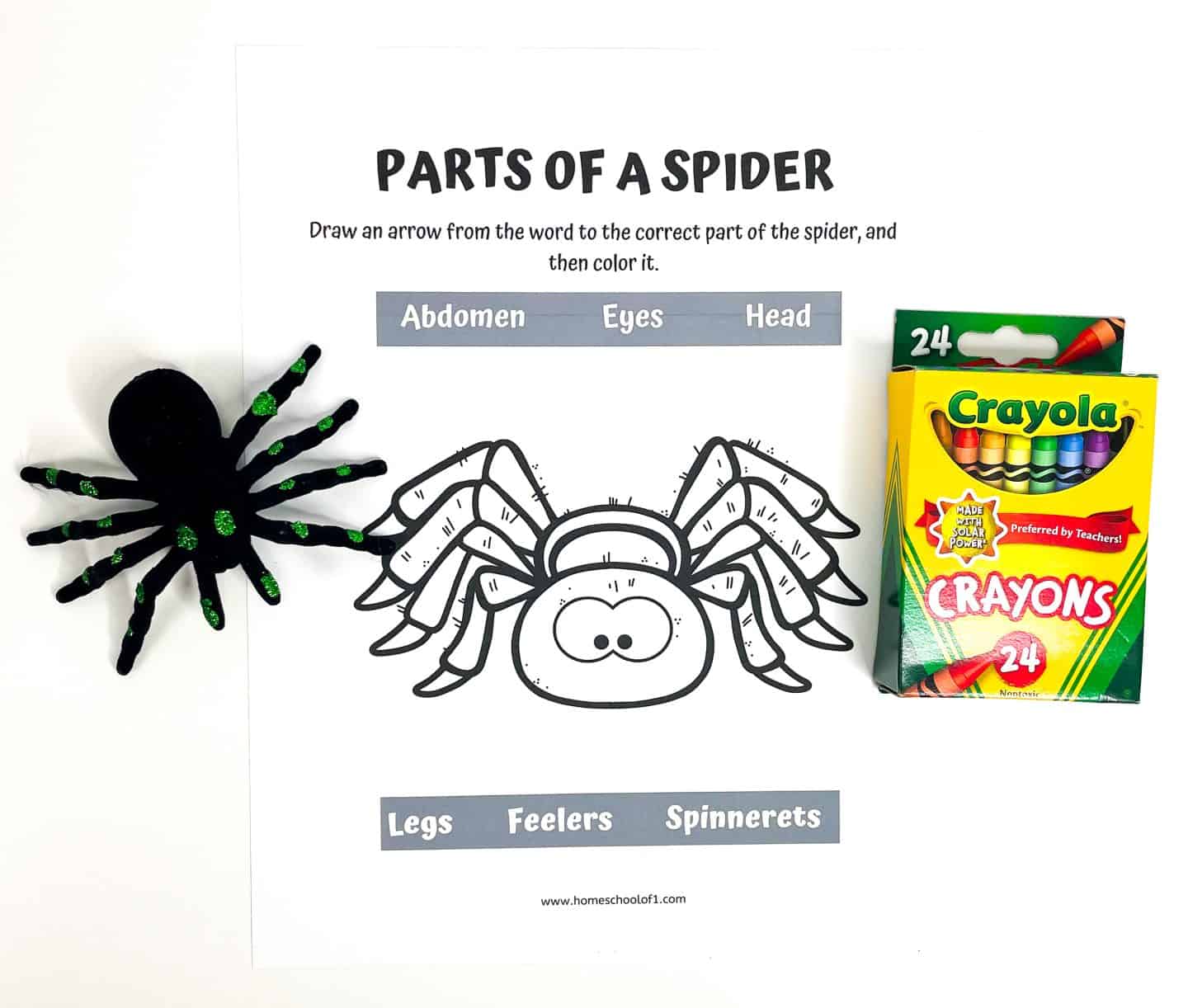
Color and label the different cycles of the spider
On the next page, the children have to color the different stages of the spider’s life, and then label which is which.
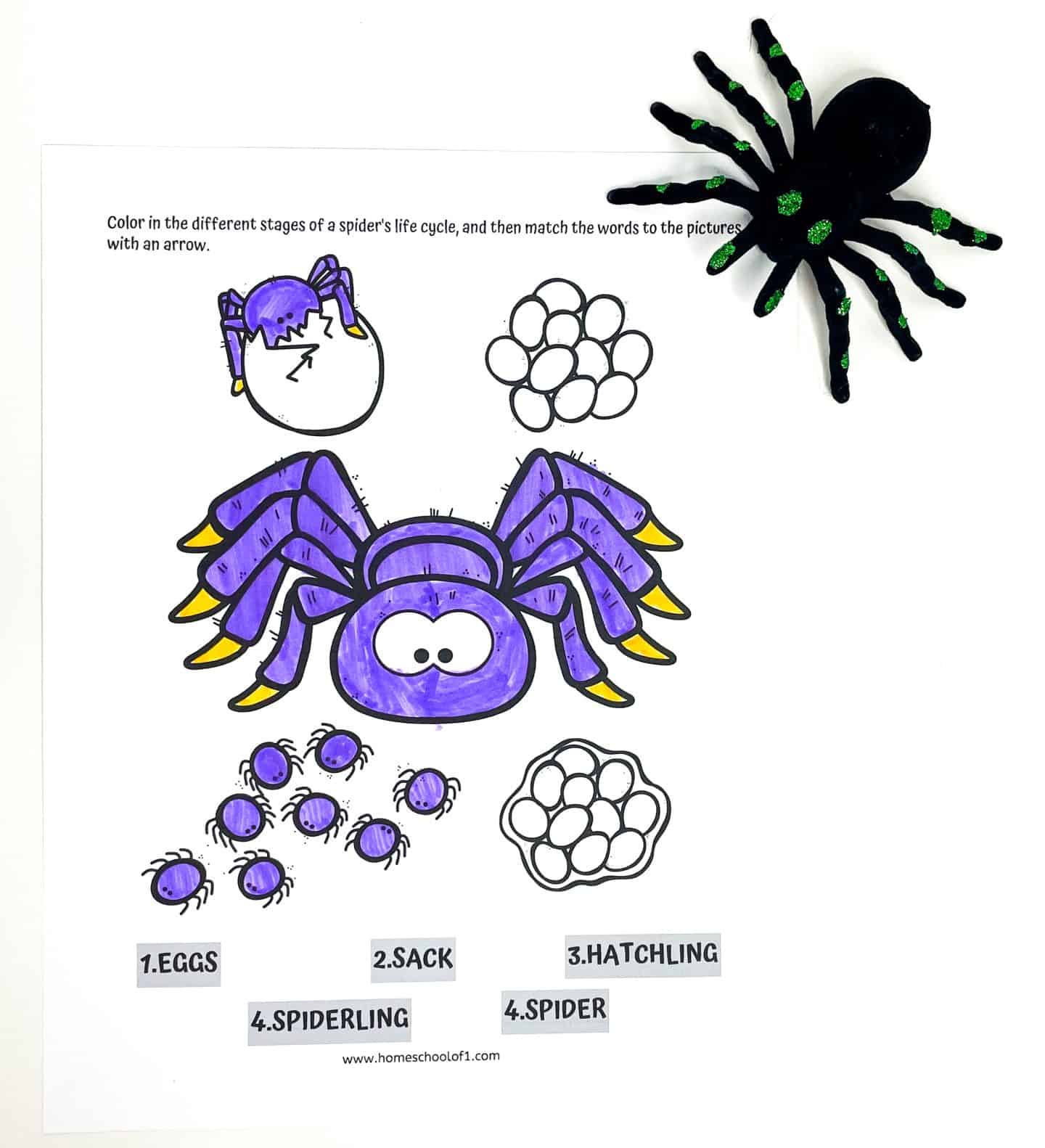
We love to add the Life Cycles book to our studies.
Spider life cycle crafts
Dive into the fascinating world of arachnids with our spider life cycle crafts. Perfect for educators and parents, these crafts offer a hands-on learning experience, creatively exploring the stages of a spider’s life. Engage kids in educational fun as they craft their way through egg, spiderling, and adult spider phases.
The first page is a fun spider craft that involves coloring, folding, cutting, and gluing.
I recommend coloring the images in first, but if you are working with much younger children then you might want to cut them in advance.
Cut up the spider craft, younger children may need some help.
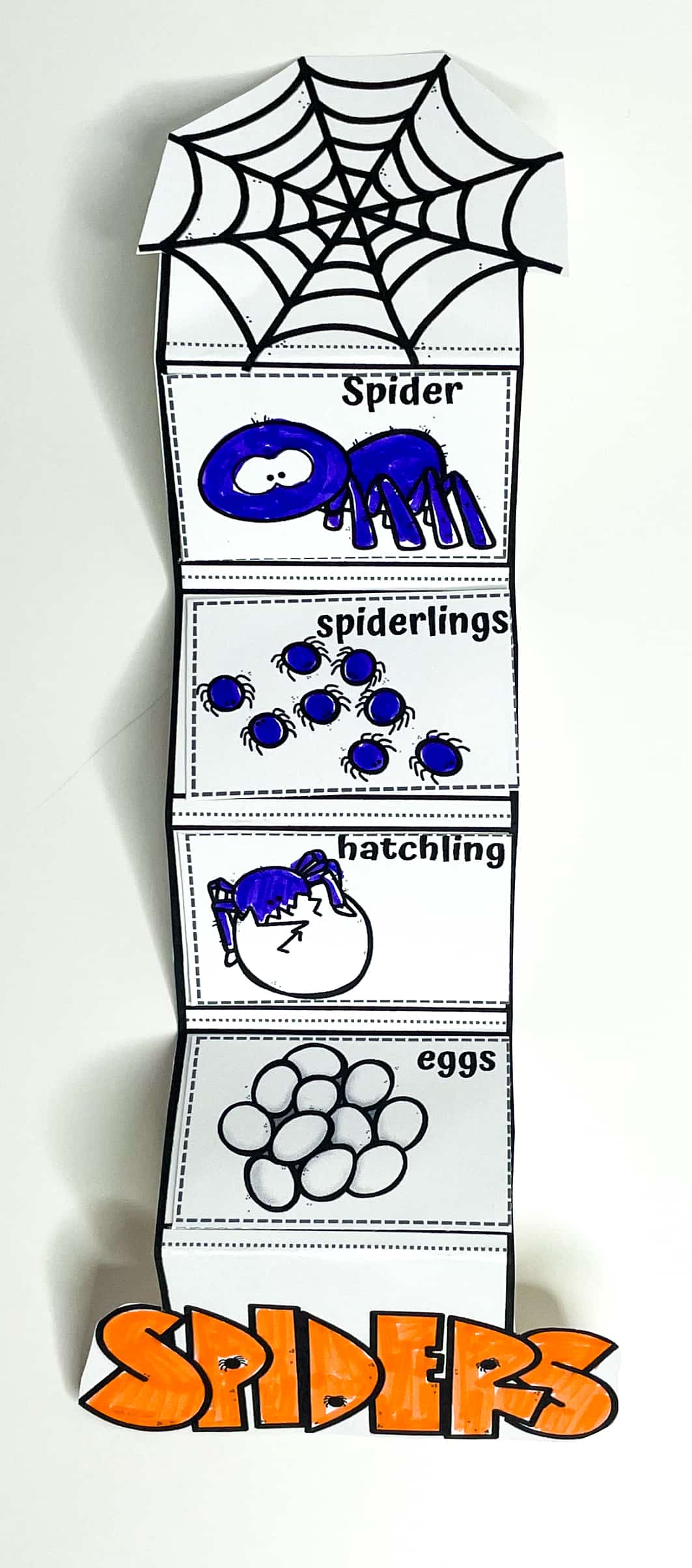
Sort the images into the correct order and glue them under the spider. When you have glued the pictures you need to fold them along the dotted lines.
Spider life cycle spinning wheel craft
The next spider craft is the life cycle of a spider spinner wheel.
Cut out the two circles, and make sure on the spider life cycle image you cut out the blank quarter.
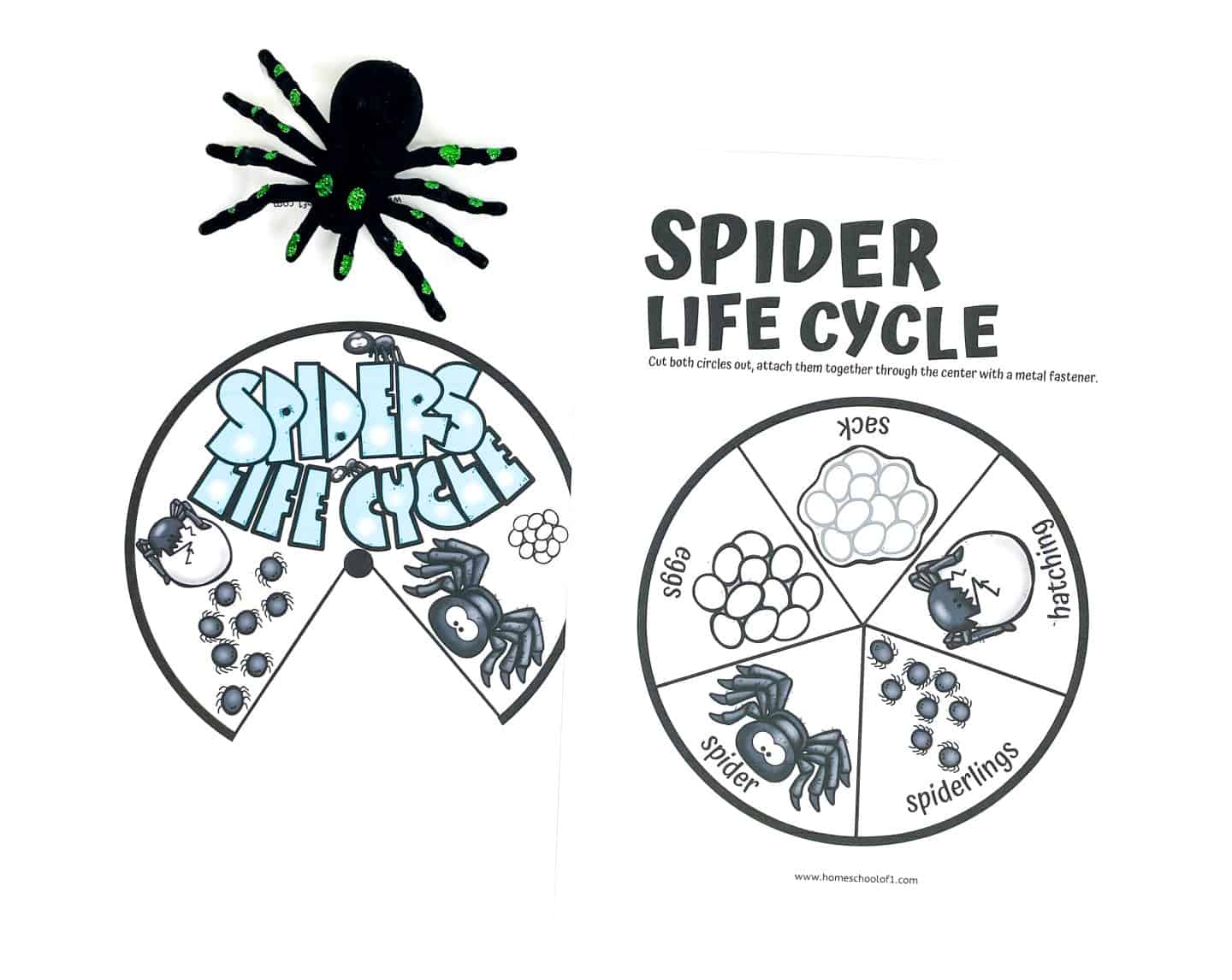
Place the spider life cycle image with the quarter cut out on top of the other image and add a brass fastener to the middle.
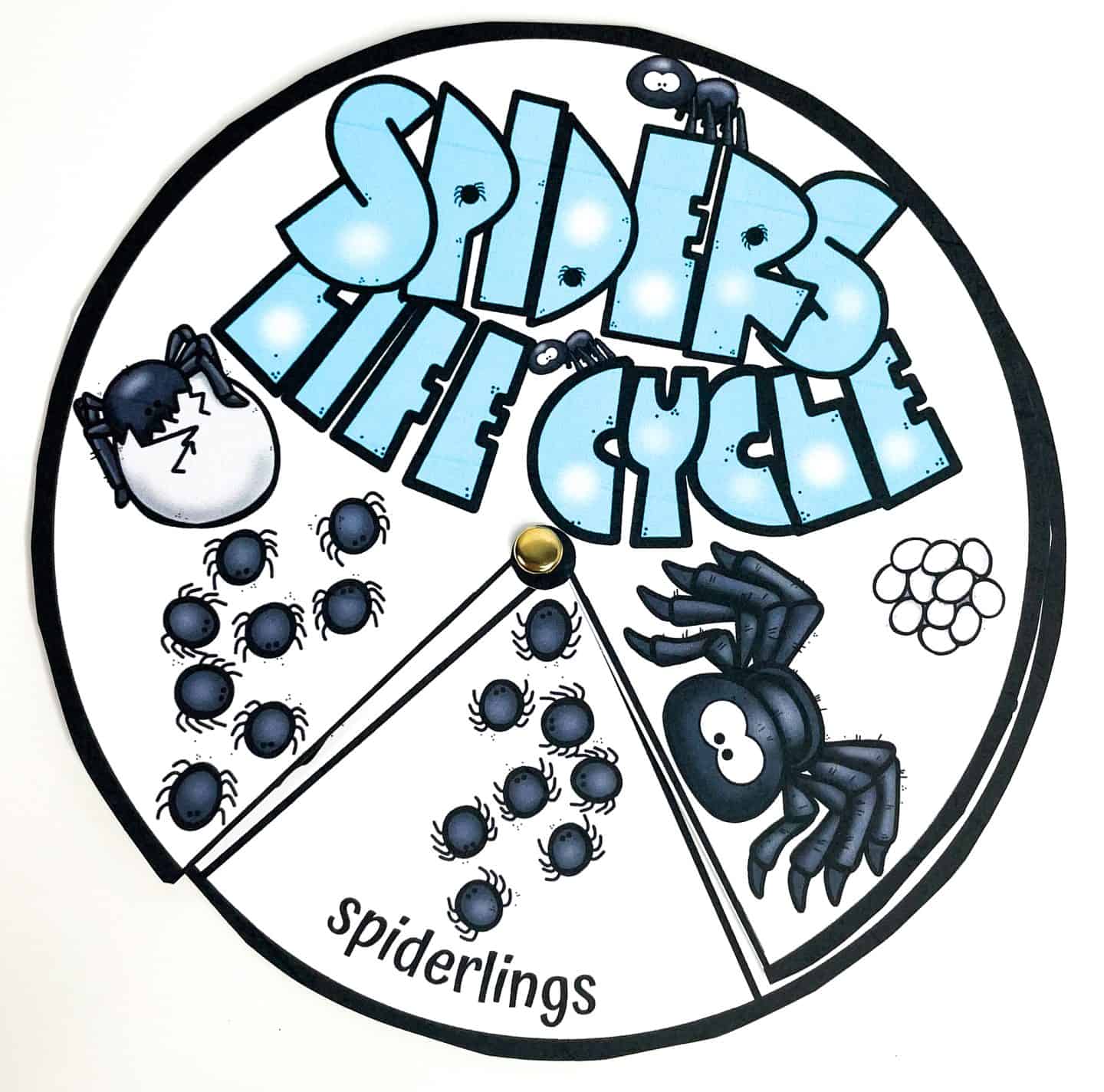
Best spider books for kids
Add a book about spiders when you have completed the worksheets:
National Geographic Readers: Spiders. Dive into the world of spiders with this educational book! Filled with stunning photographs and easy-to-understand facts, young readers will learn about the incredible diversity of spiders, their behaviors, and how they contribute to our ecosystem.
I’m Trying to Love Spiders. In this charming and humorous picture book, the author takes readers on a journey of learning to appreciate spiders despite their initial fears. Through fun illustrations and quirky anecdotes, the book encourages a newfound admiration for these eight-legged creatures.
Are You a Spider? Get ready to explore the world of spiders in your own backyard! This interactive book invites young readers to imagine themselves as spiders, complete with intricate illustrations and engaging facts about spider habitats, behaviors, and survival skills.
Get the free printable spider life cycle worksheets here!
If you are running short on time you can download all of our life cycle worksheets. There are 247 pages over 23 different life cycles.
Need to print later? Add this to your Pinterest board or share it on Facebook. You’ll have it handy whenever you’re ready to use it!
Ready to grab your free printable? Just pop your name and email into the form below, and it’s all yours!
Additional spider activities
Continue having fun with spiders with these fun crafts:
- Spider handprint art
- Simple spider craft from Living Life and Learning
- Bottle stop spider craft for preschoolers from Homeschool Preschool
- Toilet paper roll pipe cleaner spiders from Simple Everyday Mom
Last Updated on 8 April 2025 by Clare Brown

